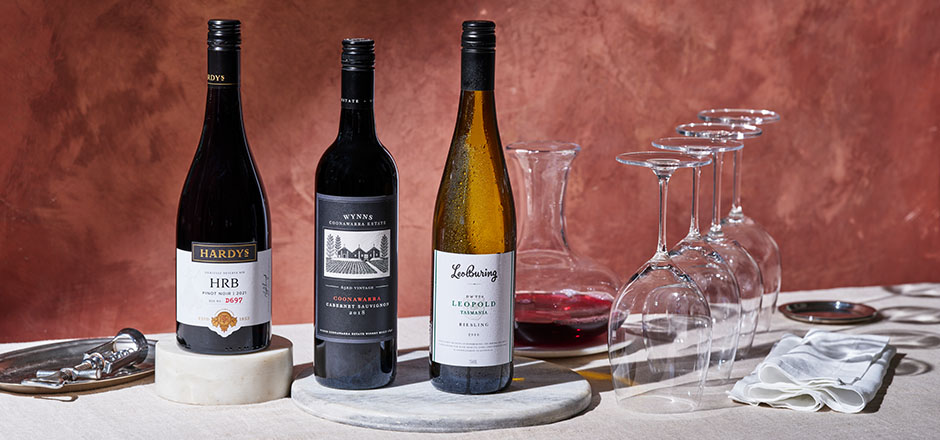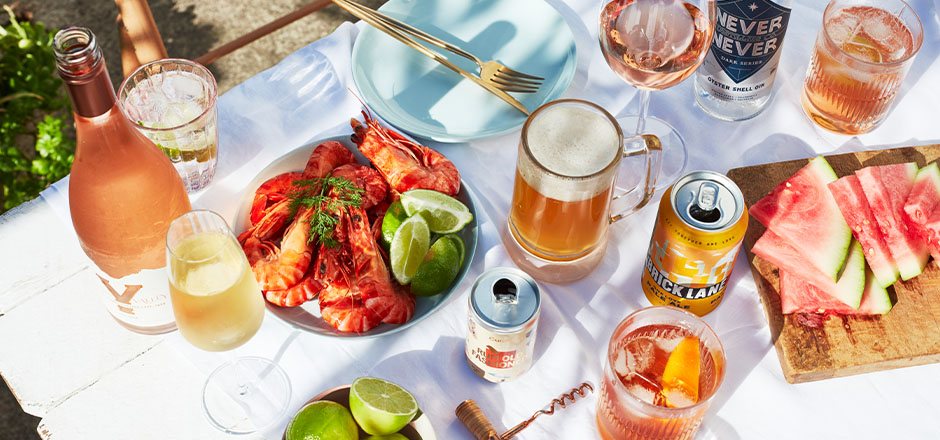- The Drop
Your expert guide to cellaring wine
Read Time 5 Minutes
Posted 28 Jun 2023
By Vintage Cellars

Love the idea of a wine cellar, but not sure where to begin? Follow this guide to master the basics of cellaring wine at home, plus the bottles you need to get you started.
Wine is an organic creation, everchanging and capable of improvement. When selected and stored correctly, with time and patience, a complex and beautiful transformation occurs: a bright citrusy riesling slowly develops toasty nutty tones; a bold youthful cabernet may gently soften to autumnal savoury complexity. The thrill of allowing that special bottle to evolve and improve over time is a reward like no other. To mark an occasion, perhaps paired with a celebratory meal, the anticipation and excitement of how that wine might reveal itself is all part of the intrigue of cellaring wine. And the good news is you can do it at home.
How to set up your home cellar
If you invest in a wine collection, you also need to invest in a place to store it. There’s no point collecting it if you can’t look after it properly. Cellaring is largely an issue of space: few of us have Bordeaux-like caves hiding under the house, so the first thing to consider is where you plan to store your wine. That said, imagine what caves provide to understand what the wine needs to mature in the optimum manner: stillness, darkness and constant humidity and temperature. In short, stability. Fortunately, wine fridges are easy to find and come in an array of sizes and shapes, making even the most eccentric space viable for successful storage.
Cellar-worthy wine styles
Once you have your space set up, and your wine fridge is plugged in, it’s time to decide what needs to go inside. Some wines are designed for early drinking and won’t improve with long-term cellaring, while others will benefit from time. For whites, high-acid varieties such as chenin blanc, semillon and riesling can improve with time in bottle, and to a lesser extent chardonnay. Of the reds, cabernet, tempranillo and shiraz are famously built to last. Grenache and pinot are also worthy of time, but again, less so. These varieties, made by a reputable, good-quality producer, will almost always benefit from the opportunity of some welcome bottle age.

Looking after your wine cellar
Wines with corks need to lie horizontally to prevent the cork from drying out and becoming crumbly. Happily, those in screw cap don’t have this issue. White and red wines can mature gracefully at a temperature of 14 degrees Celsius. This slows the aging process of the wine. That said, up to 18 degrees is acceptable, but it’s vital to understand that the wine will develop more rapidly at a higher temperature. Depending on how long you want to store
your wine before opening it, the temperature at which you store it is a central consideration.
When to drink the wines
Then comes the fun part: when to crack open the wines. Most producers of more serious age-worthy wines provide recommendations for cellaring durations with their tasting notes. If you buy three bottles of each wine, a fun way to monitor the evolution of the wine is to open them periodically. For instance, if a producer recommends 12 years aging, you could open the first bottle at eight years, revealing some attractive maturity as well as some lingering youthful zest. Take note and consider this when deciding when to open the next bottle, and so on. A word of warning though: plan in advance when you intend to open bottles. In the excitement of it all, try to resist pulling the corks on your most anticipated bottles towards the end of a long dinner party. You may regret it in the morning.
Great wines from our cellar to yours
Your local Vintage Cellars is your one-stop shop for age-worthy wines to cellar and museum releases that have been expertly cellared for you. Here are four to try now.
2016 Leo Buring Clare Valley Riesling (Museum Release)
Leo Buring is renowned for scintillating age-worthy rieslings. Quartz-like acidity drives pure zesty lime, with hints of toast and spice. An outstanding vintage – drink now to 2028.
2012 Grant Burge Corryton Park Cabernet Sauvignon
A complex potpourri of briary black fruit, savoury juniper spice and tobacco. This is a beautifully mature cabernet, best decanted and appreciated now until 2026.
2018 Wynns Black Label Cabernet Sauvignon
This Coonawarra thoroughbred is cassis and dark plum, with bay leaf and wood smoke. A staple in any good cellar, this will age up to two decades.
A supple, multi-regional blend, peony scented with a compote of raspberry, wild strawberry and fine tannins. Silken and harmonious now, complex and autumnal with a further 5-7 years under its belt.
Products featured are available from 28/06/23 to 1/08/23, while stocks last. Some products or varieties featured may not be available in all stores.
- The Drop
- View More Posts The Drop








